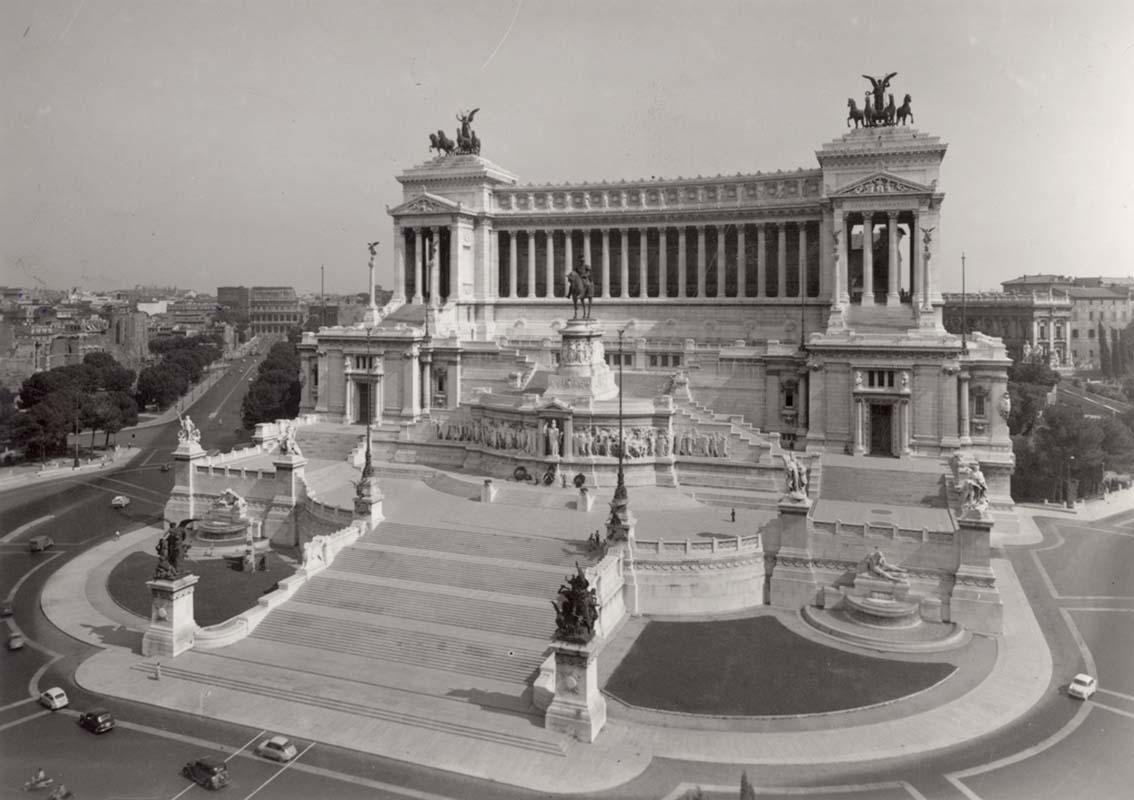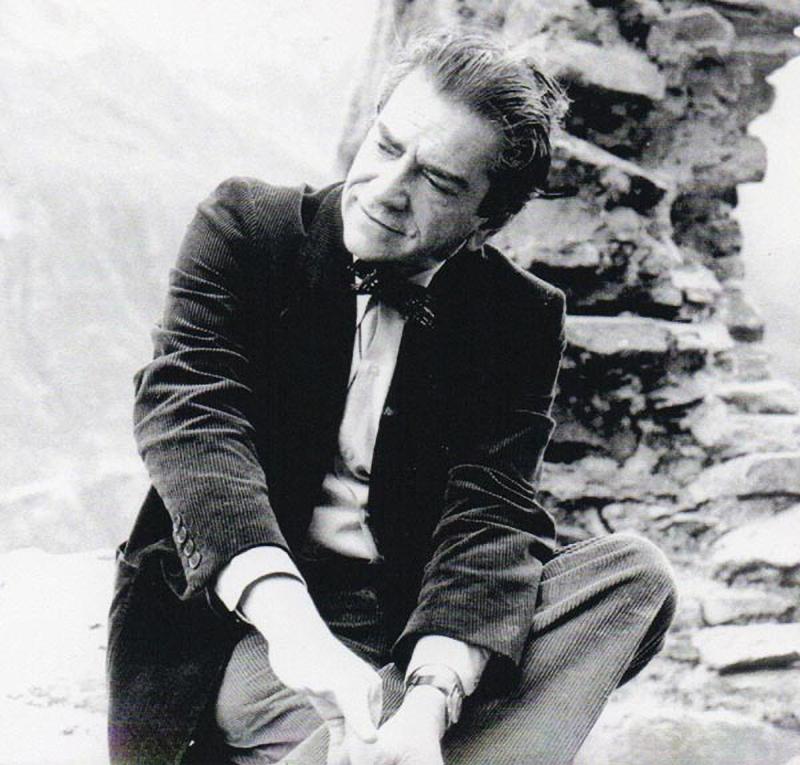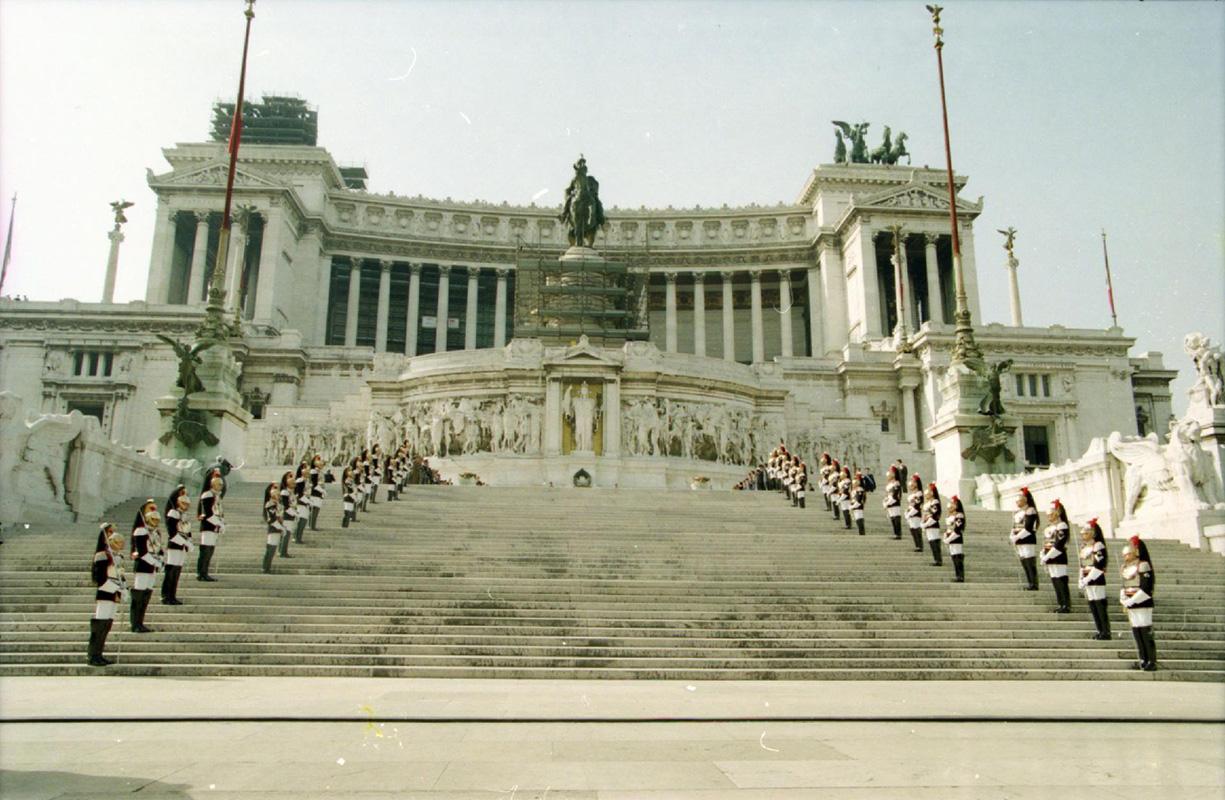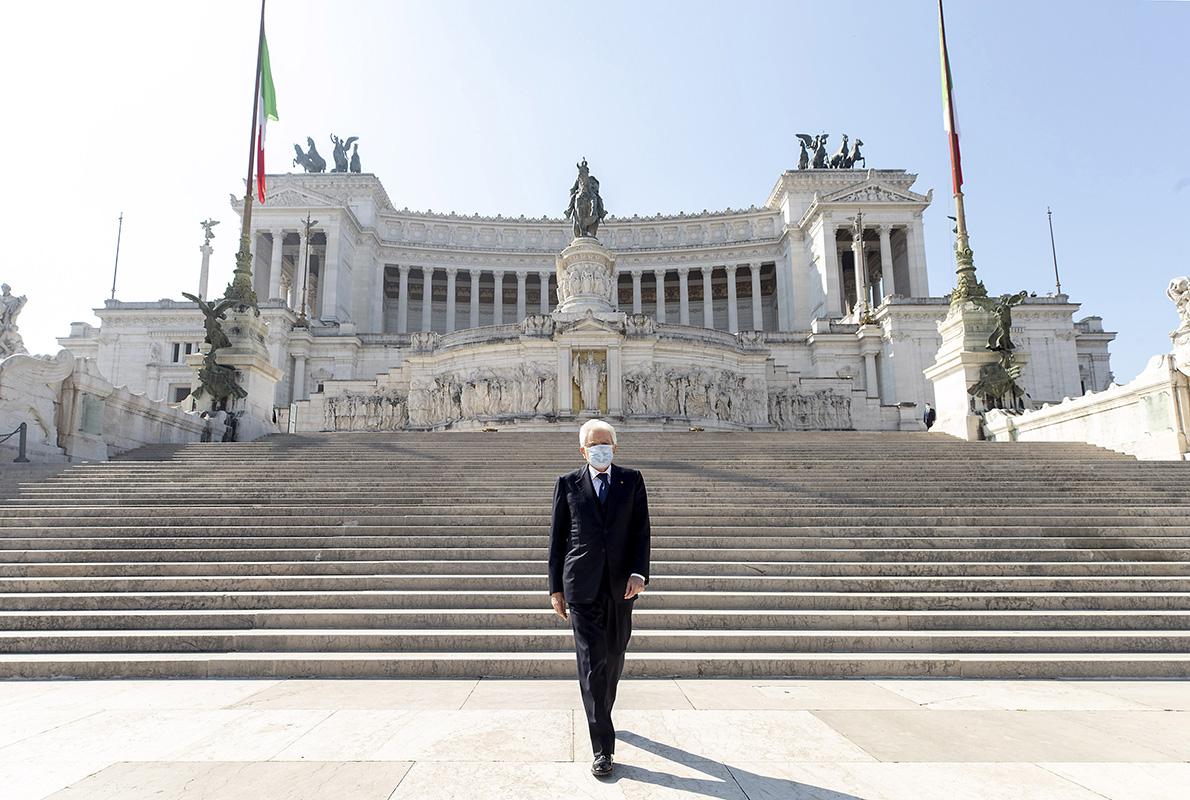The Altar of the Fatherland today, the legacy of a "united, independent, free and democratic Italy"
The Monument’s post-war misfortune and its recovery thanks to the Presidency of the Republic
With the fall of Mussolini, many identified the Altar of the Fatherland with the fascist regime and subjected it together with the Vittoriano to a damnatio memoriae (condemnation of memory). Still in 1983, this substantial detachment from the monument or, to be more precise, from its interpretation in exclusively rhetorical terms, was interpreted by Roberto Benigni, who in the film Tu mi turbi overturned it in an ironic and surreal key. Three years later, in 1986, neighbouring Palazzo Venezia housed a sort of 'trial' to the Altar of the Fatherland, with the prospect of destroying it.
For a decisive change, it was necessary to wait for the work of national pacification carried out by the President of the Republic Carlo Azeglio Ciampi (1999-2006) and by his successors. Since then, the Altar of the Fatherland has regained its central position in the life of the Country, underlined by the deposition of laurel wreaths by foreign Heads of State on official visits and by the Presidents of the Republic on the 25 April, 2 June and 4 November anniversaries.
25th April 2020: in the midst of the pandemic emergency, President Sergio Mattarella places a laurel wreath on the Altar of the Fatherland to celebrate Liberation Day from the fascist regime. The images of the solitary President, protected by the anti-COVID mask, take on an iconic value. A few months later, during the ceremony of 4th November 2021, Sergio Mattarella himself summarised the Country's link with the Altar of the Fatherland and the Unknown Soldier: “Our thoughts go to those who have suffered, to the point of extreme sacrifice, to leave a united, independent, free and democratic Italy to the younger generations (...). Their recollection represents the deepest and most sincere stimulus to fulfil our duties as Italian and European citizens".














